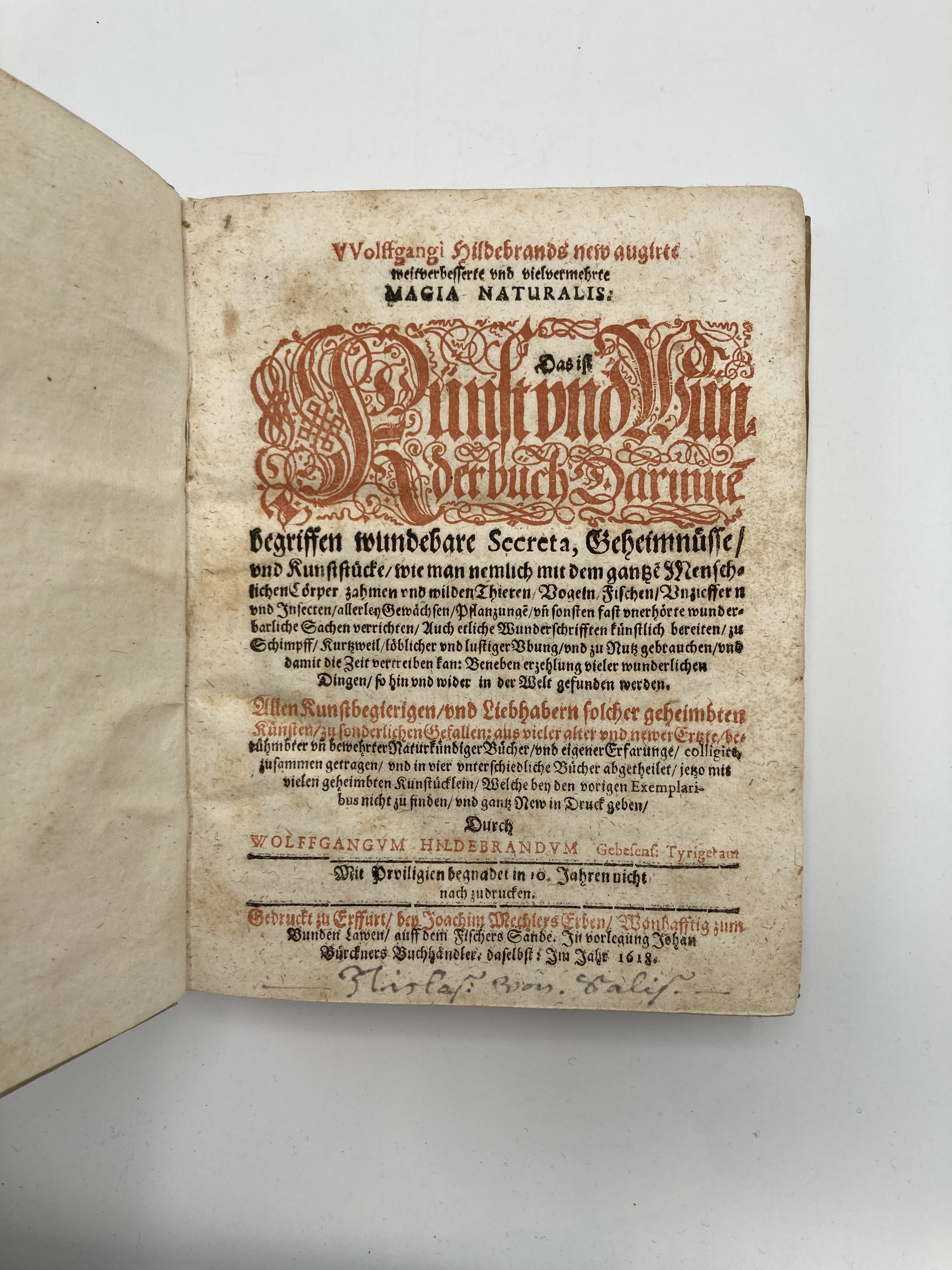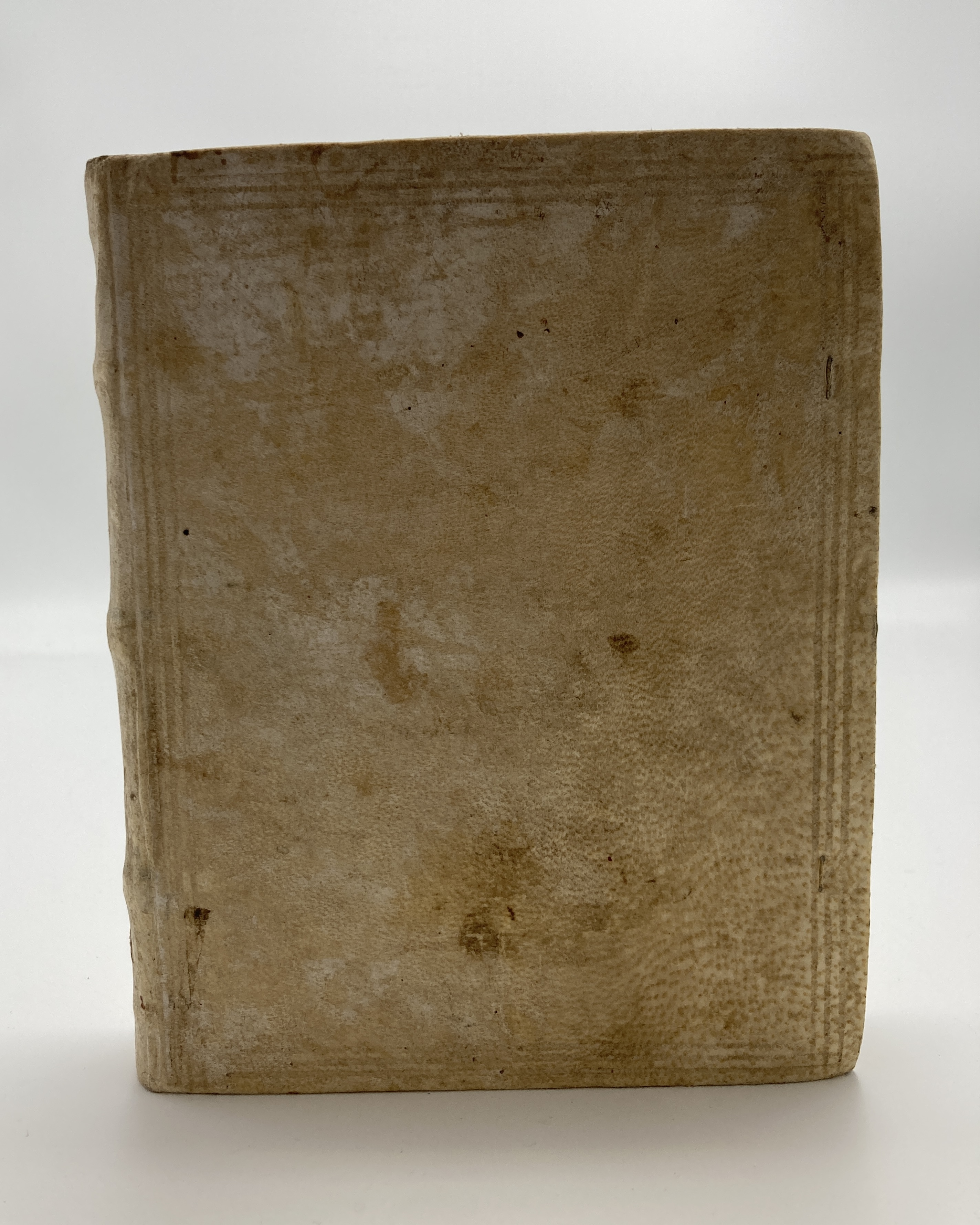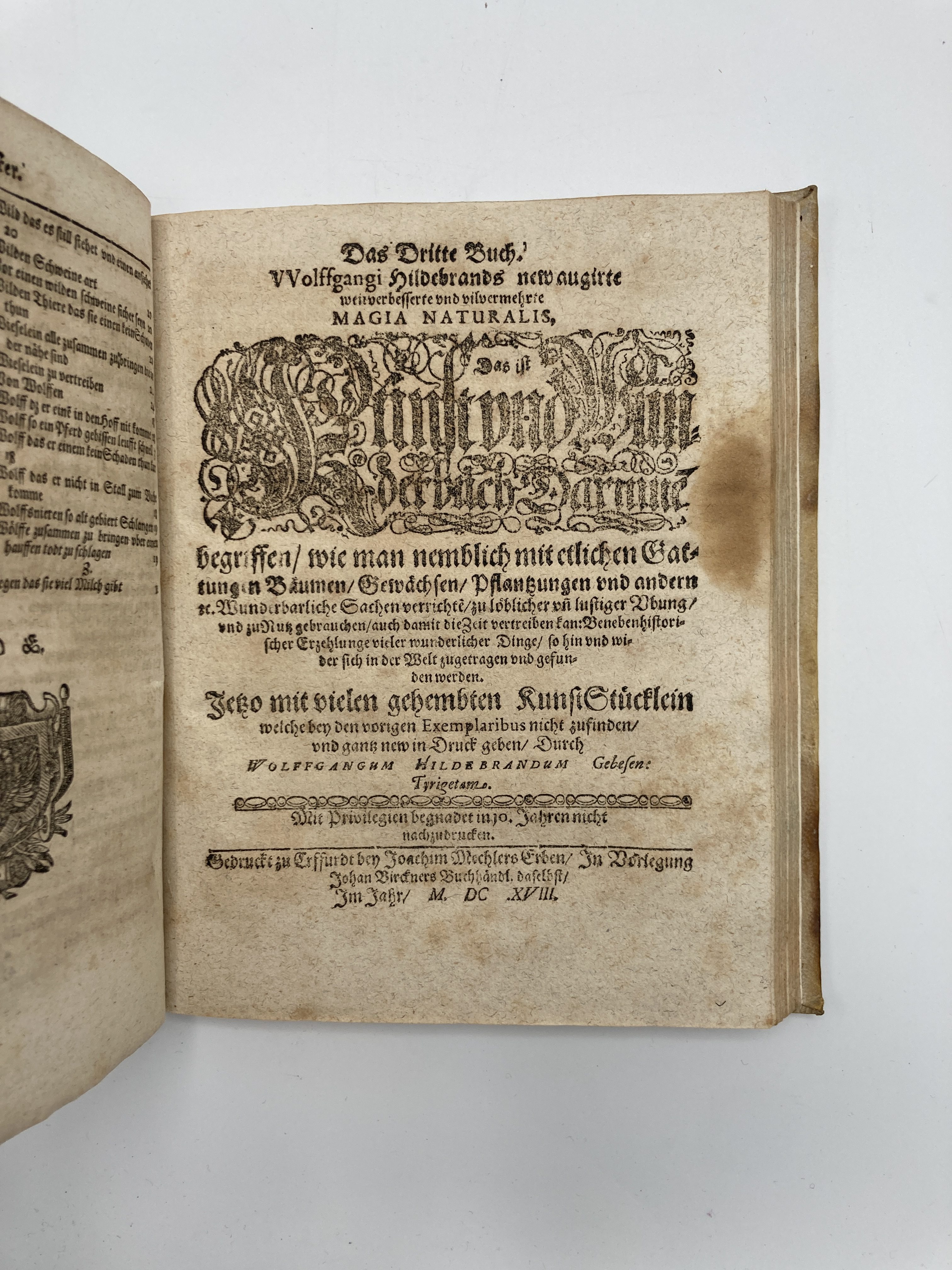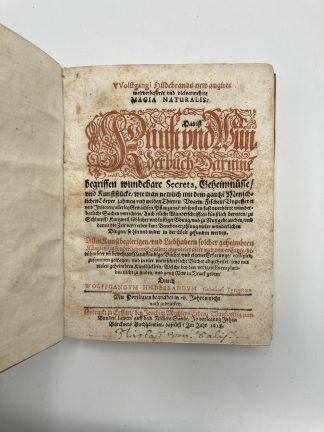HILDEBRAND, Wolfgang
Magia Naturalis, das ist Kunst und Wunderbuch…
Joachim Wechlers Erben, Erfurt, 1618.£2,250.00
4to. 4 books in 1, separate t-p to each. ff. [9] 50 [2], [1] 53 [2], [1] 35 [3], [1] 27 [4]. Gothic letter, some Roman, little italic. First title in red and black, early autograph at foot, full page woodcut portrait of author, anonymous armorial bookplate to front pastedown, index at end. Large initials and ornaments throughout. Mostly light age browning, marginal oil stains to a few ll,, light foxing. A good copy in contemporary vellum, triple blind rules, lacks ties.
An early edition of this curious and wide-ranging work on ‘natural magic’, by the obscure Hildebrand (ca.1571-1635), a near contemporary of Paracelsus, Cardanus and Comenius. His most successful work, it is arranged thematically and divided in four books. Taking ‘magia’ as a general term for scientific pursuits such as alchemy, astronomy and even theology, it explores ‘recipes for colouring the hair, improving the memory, making a man merry or melancholy. To see by night, one rubs one’s eyes with the blood of a bat […] other secrets are to see marvels in one’s dreams, not to get too intoxicated to quickly, to make men seem headless or with the heads of animals’. The fourth book specialises in artificial magic and contains chapters on making steel pliant, on glass, fireworks, waters, artificial gems and an artificial flying dragon.
Telle considered Hildebrand ‘a cunning robber who compiled foreign texts and thereby achieved a literary achievement that was considered valid at the time’. Much of the text comprises passages from other works, often quoted in the original language, including an extensive section of the Quaestiones from Kramer’s ‘Malleus Maleficarum’. Other authors of note include Gesner, Albertus Magnus, Jan Baptists von Helmont. Although the majority of scientific, medical and alchemical literature at the time was in Latin, a large portion of the present work, remarkably, is written in German. This made the work more accessible and followed the popular humanist philosophy of the Renaissance, which placed emphasis on human autonomy and progress and instigated a large-scale move towards printing in the vernacular. Its popularity was enduring, going through 10 editions during the 17th century alone.
Graesse III: p.278; Thorndyke VII: p.277-78; J. Telle ‘Die ‘’Magia Naturalis’’ Wolfgang Hildebrands, 1976’; edition not on USTC; not in Duveen, Ferguson or Caillet.In stock





